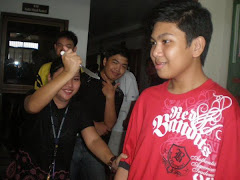In biology, mutations are changes to the nucleotide sequence of the genetic material of an organism. Mutations can be caused by copying errors in the genetic material during cell division, by exposure to ultraviolet or ionizing radiation, chemical mutagens, or viruses, or can occur deliberately under cellular control during processes such as hyper mutation. In multicellular organisms, mutations can be subdivided into germ line mutations, which can be passed on to descendants, and somatic mutations, which are not transmitted to descendants in animals. Plants sometimes can transmit somatic mutations to their descendants asexually or sexually (in case when flower buds develop in somatically mutated part of plant). A new mutation that was not inherited from either parent is called a de novo mutation.
By effect on structure
Illustrations of five types of chromosomal mutations.
The sequence of a gene can be altered in a number of ways. Gene mutations have varying effects on health depending on where they occur and whether they alter the function of essential proteins. Structurally, mutations can be classified as:
Small-scale mutations, such as affecting a small gene is one or a few nucleotides, including:
Point mutations, often caused by chemicals or malfunction of DNA replication, exchange a single nucleotide for another. Most common is the transition that exchanges a purine for a purine (A ↔ G) or a pyrimidine for a pyrimidine, (C ↔ T). A transition can be caused by nitrous acid, base mis-pairing, or mutagenic base analogs such as 5-bromo-2-deoxyuridine (BrdU). Less common is a transversion, which exchanges a purine for a pyrimidine or a pyrimidine for a purine (C/T ↔ A/G). A point mutation can be reversed by another point mutation, in which the nucleotide is changed back to its original state (true reversion) or by second-site reversion (a complementary mutation elsewhere that results in regained gene functionality). These changes are classified as transitions or transversions. An example of a transversion is adenine (A) being converted into a cytosine (C). There are also many other examples that can be found. Point mutations that occur within the protein coding region of a gene may be classified into three kinds, depending upon what the erroneous codon codes for:
Silent mutations: which code for the same amino acid.
Missense mutations: which code for a different amino acid.
Nonsense mutations: which code for a stop and can truncate the protein.
Insertions add one or more extra nucleotides into the DNA. They are usually caused by transposable elements, or errors during replication of repeating elements (e.g. AT repeats). Insertions in the coding region of a gene may alter splicing of the mRNA (splice site mutation), or cause a shift in the reading frame (frameshift), both of which can significantly alter the gene product. Insertions can be reverted by excision of the transposable element.
Deletions remove one or more nucleotides from the DNA. Like insertions, these mutations can alter the reading frame of the gene. They are generally irreversible: though exactly the same sequence might theoretically be restored by an insertion, transposable elements able to revert a very short deletion (say 1-2 bases) in any location are either highly unlikely to exist or do not exist at all. Note that a deletion is not the exact opposite of an insertion: the former is quite random while the latter consists of a specific sequence inserting at locations that are not entirely random or even quite narrowly defined.
- Large-scale mutations in chromosomal structure, including:
Amplifications (or gene duplications) leading to multiple copies of all chromosomal regions, increasing the dosage of the genes located within them.
Deletions of large chromosomal regions, leading to loss of the genes within those regions.
Mutations whose effect is to juxtapose previously separate pieces of DNA, potentially bringing together separate genes to form functionally distinct fusion genes (e.g. bcr-abl). These include:
Chromosomal translocations: interchange of genetic parts from nonhomologous chromosomes.
Interstitial deletions: an intra-chromosomal deletion that removes a segment of DNA from a single chromosome, thereby apposing previously distant genes. For example, cells isolated from a human astrocytoma, a type of brain tumor, were found to have a chromosomal deletion removing sequences between the "fused in glioblastoma" (fig) gene and the receptor tyrosine kinase "ros", producing a fusion protein (FIG-ROS). The abnormal FIG-ROS fusion protein has constitutively active kinase activity that causes oncogenic transformation (a transformation from normal cells to cancer cells).
Chromosomal inversions: reversing the orientation of a chromosomal segment.
Loss of heterozygosity: loss of one allele, either by a deletion or recombination event, in an organism that previously had two different alleles.
By effect on function
Loss-of-function mutations are the result of gene product having less or no function. When the allele has a complete loss of function (null allele) it is often called an amorphic mutation. Phenotypes associated with such mutations are most often recessive. Exceptions are when the organism is haploid, or when the reduced dosage of a normal gene product is not enough for a normal phenotype (this is called haploinsufficiency).
Gain-of-function mutations change the gene product such that it gains a new and abnormal function. These mutations usually have dominant phenotypes. Often called a neo-morphic mutation.
Dominant negative mutations (also called anti-morphic mutations) have an altered gene product that acts antagonistically to the wild-type allele. These mutations usually result in an altered molecular function (often inactive) and are characterised by a dominant or semi-dominant phenotype. In humans, Marfan syndrome is an example of a dominant negative mutation occurring in an autosomal dominant disease. In this condition, the defective glycoprotein product of the fibrillin gene (FBN1) antagonizes the product of the normal allele.
Lethal mutations are mutations that lead the death of the organisms which carry the mutations.
By aspect of phenotype affected
Morphological mutations usually affect the outward appearance of an individual. Mutations can change the height of a plant or change it from smooth to rough seeds.
Biochemical mutations result in lesions stopping the enzymatic pathway. Often, morphological mutants are the direct result of a mutation due to the enzymatic pathway.
By inheritance
The human genome contains two copies of each gene- a paternal and a maternal allele.
Wildtype or Homozygous non-mutated is when neither allele is mutated.
A Heterozygous mutation is when only one allele is mutated.
A Homozygous mutation is when both the paternal and maternal alleles have an identical mutation.
Compound heterozygous mutations or a Genetic compound is when the paternal and maternal alleles have two different mutations.
Special classes
Conditional mutation is a mutation that has wild-type (or less severe) phenotype under certain "permissive" environmental conditions and a mutant phenotype under certain "restrictive" conditions. For example, a temperature-sensitive mutation can cause cell death at high temperature (restrictive condition), but might have no deleterious consequences at a lower temperature (permissive condition).
Why does mutation happen?
Two classes of mutations are spontaneous mutations (molecular decay) and induced mutations caused by mutagens.
Spontaneous mutations on the molecular level include:
Tautomerism - A base is changed by the repositioning of a hydrogen atom.
Depurination - Loss of a purine base (A or G).
Deamination - Changes a normal base to an atypical base; C → U, (which can be corrected by DNA repair mechanisms), or spontaneous deamination of 5-methycytosine (irreparable), or A → HX (hypoxanthine).
Transition - A purine changes to another purine, or a pyrimidine to a pyrimidine.
Transversion - A purine becomes a pyrimidine, or vice versa.
Induced mutations on the molecular level can be caused by:
Chemicals
Nitrosoguanidine (NTG)
Hydroxylamine NH2OH
Base analogs (e.g. BrdU)
Simple chemicals (e.g. acids)
Alkylating agents (e.g. N-ethyl-N-nitrosourea (ENU)) These agents can mutate both replicating and non-replicating DNA. In contrast, a base analog can only mutate the DNA when the analog is incorporated in replicating the DNA. Each of these classes of chemical mutagens has certain effects that then lead to transitions, transversions, or deletions.
Methylating agents (e.g. ethyl methanesulfonate (
Polycyclic hydrocarbons (e.g. benzopyrenes found in internal combustion engine exhaust)
DNA intercalating agents (e.g. ethidium bromide)
DNA crosslinker (e.g. platinum)
Oxidative damage caused by oxygen(O) radicals
Radiation
Ultraviolet radiation (nonionizing radiation) excites electrons to a higher energy level. DNA molecules are good absorbers of ultraviolet light, especially which with wavelengths in the 260 to 280 nm ranges. Two nucleotide bases in DNA - cytosine and thymine-are most vulnerable to excitation that can change base-pairing properties. UV light can induce adjacent thymine bases in a DNA strand to pair with each other, as a bulky dimer.
Ionizing radiation
DNA has so-called hotspots, where mutations occur up to 100 times more frequently than the normal mutation rate. A hotspot can be at an unusual base, e.g., 5-methylcytosine.
Mutation rates also vary across species. Evolutionary biologists have theorized that higher mutation rates are beneficial in some situations, because they allow organisms to evolve and therefore adapt more quickly to their environments. For example, repeated exposure of bacteria to antibiotics, and selection of resistant mutants, can result in the selection of bacteria that have a much higher mutation rate than the original population (mutator strains).
Nomenclature
Nomenclature of mutations specifies the type of mutation and base or amino acid changes.
Amino acid substitution - (e.g. D111E) the first letter is the one letter code of the wildtype amino acid, the number is the position of the amino acid from the N terminus and the second letter is the one letter code of the amino acid present in the mutation. If the second letter is 'X', any amino acid may replace the wild type.
Amino acid deletion - (e.g. ΔF508) The Greek symbol Δ or 'delta' indicates a deletion. The letter refers to the amino acid present in the wild type and the number is the positions from the N terminus of the amino acid were it to be present as in the wild type.
Types of mutations
Adaptive mutation
In mainstream biological thought it is held that while mutagenesis is non-random in many ways, the utility of a genetic mutation to the organism in which it occurs does not affect the rate at which it occurs. However experimental evidence exists that in some instances the rate of specific mutations arising is greater when they are advantageous to the organism than when they are not.
Back mutation
Back mutation is a change in a nucleotide pair of a point-mutated DNA sequence that restores the original sequence and hence the original phenotype.
Frameshift mutation
A frameshift mutation is a mutation caused by indels, ie. inserts or deletes a number of nucleotides that is not evenly divisible by three from a DNA sequence. Due to the triplet nature of gene expression by codons, the insertion or deletion can disrupt the reading frame, or the grouping of the codons, resulting in a completely different translation from the original. The earlier in the sequence the deletion or insertion occurs, the more altered the protein produced is.
Missense mutation
Missense mutations or no synonymous mutations are types of point mutations where a single nucleotide is changed to cause substitution of a different amino acid. This in turn can render the resulting protein nonfunctional. Such mutations are responsible for diseases such as Epidermolysis bullosa, sickle-cell disease, and SOD1 mediated ALS(Boil lee 2006, p. 39).
Neutral mutation
A neutral mutation is a mutation that occurs in an amino acid codon (presumably within an mRNA molecule) which results in the use of a different, but chemically similar, amino acid. This is similar to a silent mutation, where a codon mutation may encode the same amino acid (see Wobble Hypothesis); for example, a change from AUU to AUC will still encode leucine, so no discernible change occurs (a silent mutation).
Nonsense mutation
A nonsense mutation is a frame shift mutation in a sequence of DNA that results in a premature stop codon, or a nonsense codon in the transcribed mRNA, and possibly a truncated, and often nonfunctional protein product.
Point mutation
A point mutation, or substitution, is a type of mutation that causes the replacement of a single base nucleotide with another nucleotide. Often the term point mutation also includes insertions or deletions of a single base pair (which have more of an adverse effect on the synthesized protein due to nucleotides still being read in triplets, but in different frames- a mutation called a frame shift mutation).
Silent mutation
Silent mutations are DNA mutations that do not result in a change to the amino acid sequence of a protein. They may occur in a non-coding region (outside of a gene or within an intron), or they may occur within an exon in a manner that does not alter the final amino acid sequence. The phrase silent mutation is often used interchangeably with the phrase synonymous mutation; however, synonymous mutations are a subcategory of the former, occurring only within exons.
Harmful mutations
Changes in DNA caused by mutation can cause errors in protein sequence, creating partially or completely non-functional proteins. To function correctly, each cell depends on thousands of proteins to function in the right places at the right times. When a mutation alters a protein that plays a critical role in the body, a medical condition can result. A condition caused by mutations in one or more genes is called a genetic disorder. However, only a small percentage of mutations cause genetic disorders; most have no impact on health. For example, some mutations alter a gene's DNA base sequence but don’t change the function of the protein made by the gene.
If a mutation is present in a germ cell, it can give rise to offspring that carries the mutation in all of its cells. This is the case in hereditary diseases. On the other hand, a mutation can occur in a somatic cell of an organism. Such mutations will be present in all descendants of this cell, and certain mutations can cause the cell to become malignant, and thus cause cancer.
Often, gene mutations that could cause a genetic disorder are repaired by the DNA repair system of the cell. Each cell has a number of pathways through which enzymes recognize and repair mistakes in DNA. Because DNA can be damaged or mutated in many ways, the process of DNA repair is an important way in which the body protects itself from disease.
Beneficial mutations
A very small percentage of all mutations actually have a positive effect. These mutations lead to new versions of proteins that help an organism and its future generations better adapt to changes in their environment. For example, a specific 32 base pair deletion in human CCR5 (CCR5-Δ32) confers HIV resistance to homozygote and delays AIDS onset in heterozygote. The CCR5 mutation is more common in those of European descent. One theory for the etiology of the relatively high frequency of CCR5-Δ32 in the European population is that it conferred resistance to the bubonic plague in mid-14th century
by Mark Nicole Cunanan











.jpg)






.jpg)

.jpg)

No comments:
Post a Comment